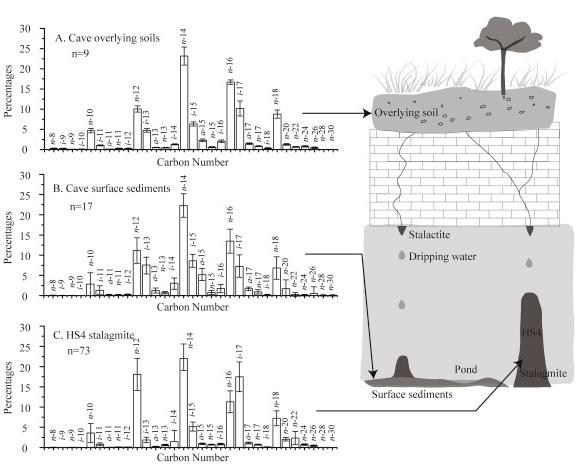Abstract
To achieve a sufficient understanding of the spatial dynamics of terrestrial climate variability, new proxies and networks of data that cover thousands of years and run up to the present day are needed. Here we show the first Gram-negative bacterial 3-hydroxy fatty acid (3-OH-FA) based temperature and hydrological records from any paleoclimate archive globally. The data, covering the last 9 ka before present (BP), are generated from an individual stalagmite, collected from Heshang Cave, located on a tributary of the Yangtze River, central China (30°27′N, 110°25′E; 294 m). Our results indicate a clear early-to-middle Holocene Climatic Optimum (8.0–6.0 ka BP) followed by a long-term monotonic cooling and increasing variability over the last 0.9 ka BP. The hydrological record shows two relatively long wet periods (8.8–5.9 ka BP and 3.0–0 ka BP) and one relatively dry period (5.9–3.0 ka BP) in central China. We show that 3-OH-FA biomarkers hold promise as independent tools for paleoclimate reconstruction, with the potential to deconvolve temperature and hydrological signals from an individual stalagmite.

Distribution and fractional abundance of 3-hydroxy fatty acid homologues in (A) cave overlying soils, (B) cave surface sediments, and (C) HS4 stalagmite samples.
Title: Holocene temperature and hydrological changes reconstructed by bacterial 3-hydroxy fatty acids in a stalagmite from central China
Authors: CanfaWang James, A.Bendle, HongbinZhang, YiYang, DengLiu, JunhuaHuang, JingweiCui, ShuchengXie
Source: Quaternary Science Reviews
Published: 2018.06.01
DOI: https://doi.org/10.1016/j.quascirev.2018.05.030